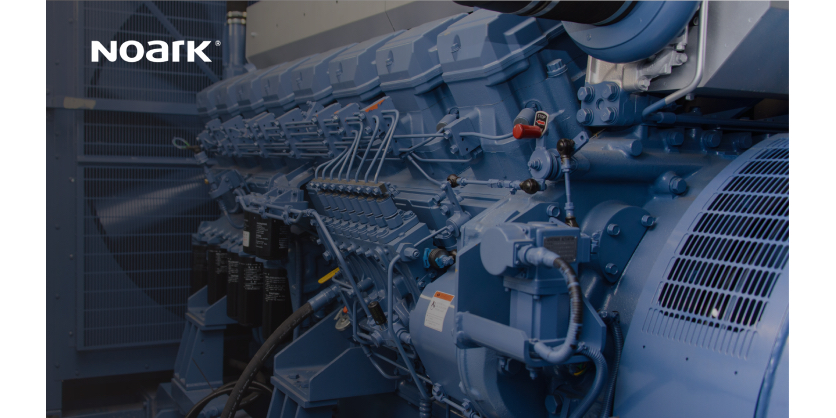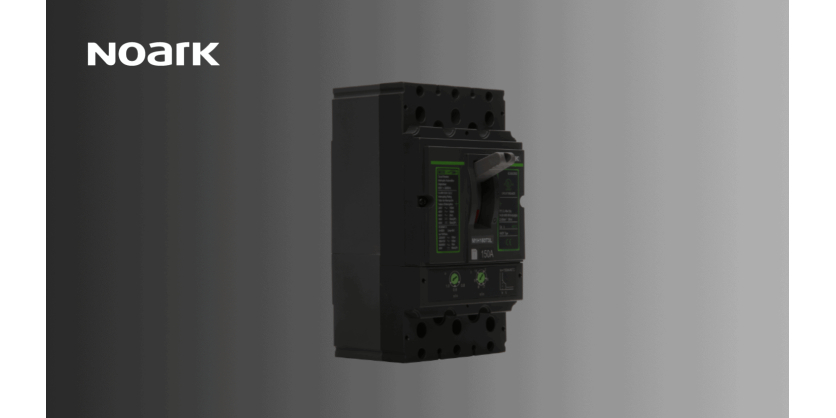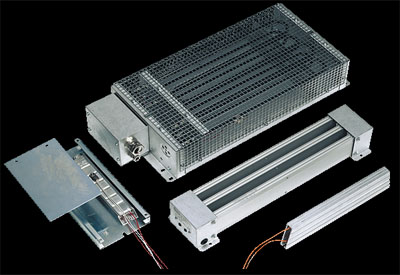Noark Electric Tech Tip: Understanding Combination Motor Controllers
December 19, 2023

Electric motors are critical components in every production process or facility because they are the movers of mechanical equipment and machinery. Without them, nothing gets done. When designing a system, it is imperative to provide protection for motors using various protection and control systems. A Combination Motor Controller (CMC) is one way to provide motor branch circuit protection and control.
In this blog, Noark Electric answers the question of which CMC a customer should deploy in their machine and why. To do this, they discuss some of the common terms surrounding motors and their operation and take a close look at the five most common types of CMCs used in North America (Type A, Type C, Type D, Type E, and Type F). Noark also clears up any confusion surrounding the differences between Self Protected Type E and Type F combination motor controllers.
Combination Motor Controllers
In North America, the standards that are applicable to motor protection and motor control are the National Electric Code (for USA), and the Canadian Electrical Code (for Canada). Additional standards, such as the National Fire Protection Association (NFPA) and the standards of UL and CSA.
According to North American standards, each motor branch circuit protective system must meet four functional requirements:
- A main disconnect: a way to disconnect the motor from the electrical network
- Short circuit protection: a device to protect the motor from short circuits
- Motor control: a controller which switches on and off the motor
- Overload protection: a device which prevents the motor from overheating
All these functions can be performed by a single device or combination of components. For example, a disconnector can be used as a main disconnect; a fuse can be used for short circuit protection; a contactor can be used to switch the motor ON/OFF; and a bimetallic overload relay can be used to prevent the motor from overheating.
When all these functions are integrated into one device or a combination of components, we have a combination motor controller. As the name suggests, there are various possible combinations that can be created to ensure that each of these four functions are met. Therefore, types are used to describe these various combinations. Construction types are defined by the UL 508 as Type A through to Type F. With a good understanding of the different types of CMCs, machine builders and panel builders can make smarter choices for motor control in their systems. The various types of combination motor controllers are as follows:
Type A
Type A combination motor controller consist of a disconnect switch, fuse, motor controller, and overload relay1. Type A combination motor controller means that every function (main disconnect, branch circuit short circuit protection, motor controller, and motor overload protection) is performed out by four different devices.
Type C
Type C combination motor controller consists of inverse time circuit breaker, motor controller, and overload relay1. In Type C combination motor controller, the first two functions (main disconnect and short circuit protection) are combined into one device, a circuit breaker. This reduces the number of components involved and the amount of space required in the panel. The other components in the assembly are the motor contactor and overload relay. This combination utilizes an inverse time circuit breaker, which can potentially allow better isolation of a fault and can put back into service once the fault is cleared unlike the fuse in Type A that has be replaced after a fault trip.
Type D
Type D combination motor controller consists of instantaneous trip circuit breaker, motor controller, and overload relay1. Type D combination motor controller is like the Type C combination motor controller in that the first two functions (main disconnect and short circuit protection) are combined into one device, an instantaneous trip or magnetic circuit breaker. In series combination with the magnetic breaker are the motor controller (a contactor) and an overload relay for overload protection.
Type E
Type E (self-protected) combination motor controller consists of manual self-protected combination motor controller and motor controller1. A Type E combination motor controller is the only CMC that consists of a single component. All the functions (main disconnect, branch circuit short circuit protection, motor controller, and motor overload protection) are designed within a single device. This makes a Type E CMC an ideal choice when panel space is limited.
For example, Noark’s Ex9S Manual Motor Starter provide manual isolation, manual motor control, and overcurrent protection. They are electromechanical devices combining the functions below in one unit:
- Disconnect for Motor Branch Circuit
- Manual Motor Control (automatic when used with contactor)
- Branch-Circuit Short Circuit Protection (Magnetic Protection)
- Overload Protection (Thermal ProteNoark Electric clears up the misunderstanding of 80% Vs. 100-% rated circuit breakers. When it comes to electrical installations and maintenance, safety is of utmost importance. Even among professionals in the field, there is often a misunderstanding between 80% and 100% rated circuit breakers and their applications in panel design.ction) – Tip Class 10
For a Type E CMC to be termed self-protected, it must fulfil a number of conditions:
- Sufficient creepage and clearance spacing on the line side of the starter
- It can be put back into service immediately after a fault has been cleared and the contacts must not weld
- Provide branch circuit protection i.e., short circuit protection
- It must have a fault indicator to indicate the type of trip – overload or short circuit
Type F
Type F combination motor controller consists of manual self-protected combination motor controller1 and separate motor controller. The manual self-protected combination motor controller is a single device consisting of a main disconnect, branch circuit short circuit protection, and motor overload protection. The main difference between a Type E and a Type F CMC is that the latter, for the motor controller function, uses a listed component certified to UL 508.
Related Products
There are many components involved in motor protection and control. And many ways to combine these components to achieve the desired outcome of the system. Below is a list of Noark Electric products that are related to combination motor controllers:
- Motor Contactors
- Overload Relays
- Manual Motor Starters (MMS)
- Molded Case Circuit Breakers
- Molded Case Switches
- Motor Circuit Protectors
Leverage Noark Electric’s Electrical Components for Your Power Systems
Motor protection and control has evolved over the decades since the introduction of the electric motor. Manufacturers have continued to improve the function and design of motors as their customers’ needs have changed as well. Standards and regulations are updated regularly to ensure safety and compliance with the latest best practice.
To make sure your power systems are operating with components that improve your designs, safety, and efficiency, contact a Noark representative today to learn more about our product offerings. Also, make sure you sign up for the Noark Newsletter to stay up to date on new product offerings, receive free resources, and more.
Related Story
Noark Electric: Understanding 80% Vs. 100% Rated Circuit Breakers

Noark Electric clears up the misunderstanding of 80% Vs. 100-% rated circuit breakers. When it comes to electrical installations and maintenance, safety is of utmost importance. Even among professionals in the field, there is often a misunderstanding between 80% and 100% rated circuit breakers and their applications in panel design.






